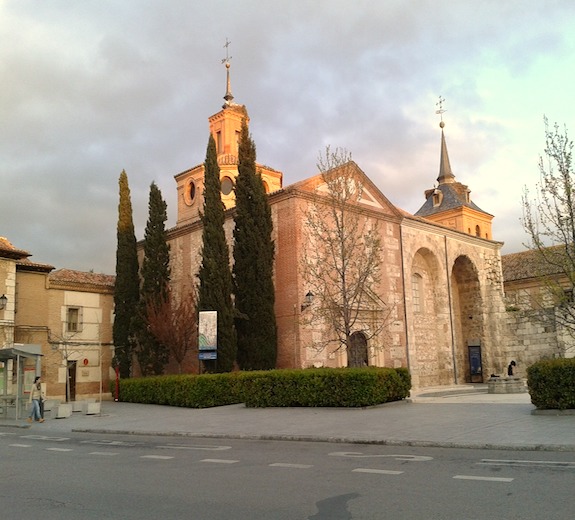Alcalá de Henares – the city of Storks
Overview
The name Alcalá de Henares means “citadel on River Henares” and the historical center in this city is designated by UNESCO as one of the World Heritage Sites. This city is situated 35 Km from Madrid and is at a height of 588 m above sea level. Its population is about 200,000. This city is also known as the University town and the Cradle of Cervantes.
The city centre has a large number of cobbled winding streets and historic buildings. This city attracts a lot of foreign students studying Spanish language and literature. It is also known for the white storks population and migratory storks come to this place because of the river Henares.
History
This city had inhabitants even at the time of ancient Greeks – Copper Age period. It was conquered by the Romans in the first Century BC. Visigoths took over this city from Romans and the city declined in this period. In the year 711 Moors founded al-qal’a, meaning citadel on a hill nearer to the existing location. The Christians abandoned the Arab site and preferred the original site. During Spanish Civil War this city suffered severe damage.
Climate
This city’s climate is continental Mediterranean; its summers are dry and hot whereas winters are cold. Rainfall occurs during autumn and spring. Maximum temperature goes to 40°C in July and August and minimum temperature is below 0°C in December and January.
The following are the important museums and monuments:
Universidad Antigua – is situated at the centre of the old town in Plaza de San Diego. It was founded by Cardinal Cisneros, also known as Cardinal Jiménez in the year 1496. It contains a Great hall and an auditorium featuring a marvelous picturesque facade.
Capilla de San Ildefonso – university chapel – is built next to Universidad Antigua and is dedicated to Cardinal Cisneros; this has the tomb of Cardinal Cisneros made from Italian marble. Its ceiling is superb and its walls are stuccoed intricately.
Holy and Illustrious Cathedral – was built during the period 1497 to 1514, this houses the Saints Justus and Pastor.
Cervantes Birthplace Museum – is located in the birthplace of Cervantes and was built in 1547.
Cuisine
The following dishes are popular in this city:
Albaladejo of trout.
Lamb of the village.
Migas – traditional breakfast.
Olla podrida – a Spanish stew made from pork and beans.
Potatoes and eggs with a spicy pork sausage seasoned with garlic.
La costrada – pastry covered with chopped almonds.
The above dishes find place in Miguel de Cervantes’s literary works and the recipes are recreated.
Photo Credit: Pixabay

